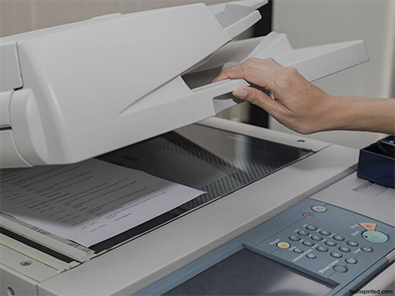Due to the mobile revolution in the workplace, more and more enterprises now use their own devices in accessing corporate data whether it be reading an email or viewing a text document. Empowering workforces through IT consumerization, is part of a growing trend called BYOD (Bring Your Own Device). As applied in printing, this set up envisions an improvement in productivity while reducing costs and can now be put to reality through Copier Leasing.
To increase satisfaction and convenience among workers in a rapidly expanding technology landscape, BYOD lets them be protected against associated risks such as parties responsible for compromised data. If the data will be lost, stolen or compromised, the security measures to be taken action of must be defined. It means having the right insurance coverage that they need.
While BYOD sounds attractive, this has a disadvantage, especially if not fully understood and regulated well. It will result in threatening the IT security and putting the company’s sensitive business at risk since they only have little or no control over the access on these personal devices.
First, here are the considerations that need to be made when investing and setting up BYOD printing solution for your business:
Availability of mobile apps for iOS, Android, Kindle, Nook, etc.;
Providing a variety of submission methods such as email, driver, web upload, mobile apps;
High-quality output print method supports through storage applications such as Google Drive, Dropbox, Box, SkyDrive;
File type support such as Microsoft Office, Open Office, pdf, jpeg, gif, tiff, png, bmp, txt, rtf, web pages;
Support for AirPrint, allowing any printer to gain AirPrint functionality;
Security of print job data and user credentials when transmitting outside the local network;
Installation compatibility with most print management systems;
Access authentication through AD/LDAP;
Produce high-quality output for all print methods and
Convenience in enabling mobile printing at remote locations
As part of network security, the practice of BYOD requires IT departments and managers to develop and implement programs that oversee unsupported devices. This process includes sensitive data encryption and preventing local storage access. Implementing a BYOD policy involves three specific stages. Secure device management allows freedom to work on personal devices while ensuring nothing harmful happens. Next, the process involves tracking and deploying mobile applications, followed by establishing collaboration through secure app-to-app workflows. This ensures both insight and mobility for users.
When it comes to BYOD pull printing which can be availed through Copier Lease Washington services, this printing solution is now being offered to most major manufacturers.
Copier Leasing Washington provides users with multiple ways to print from user-owned devices. Specifically, there are two options for employee convenience. First, employees can submit print requests via email using any mobile device, regardless of the operating system (OS). A free app can convert documents to PDF, then send them for formatting and printing on supported devices.
From anywhere employees are, BYOD pull printing functions by sending a print job to a secure server. The server then delivers or “pulls” the job, allowing employees to access and print the documents using their smart cards or PINs. Users can wait for documents to print and pick them up in bulk with authentication, regardless of quantity. Copier lease tricks work by allowing BYOD printing benefits without risks, giving companies a significant advantage.




